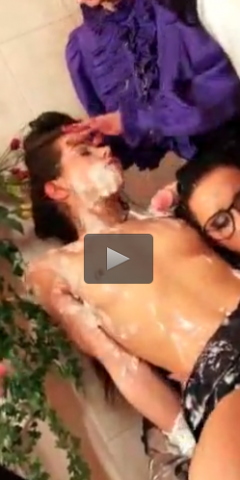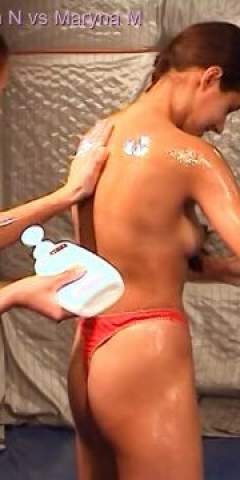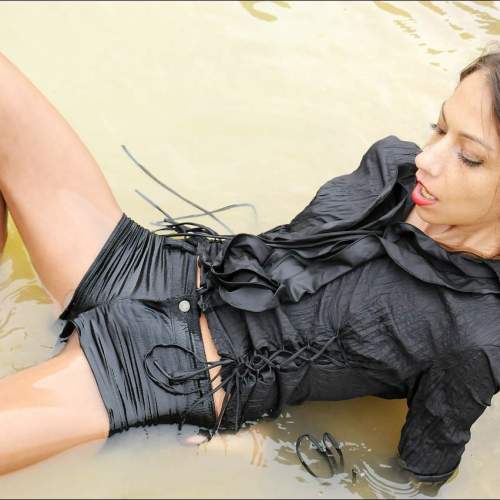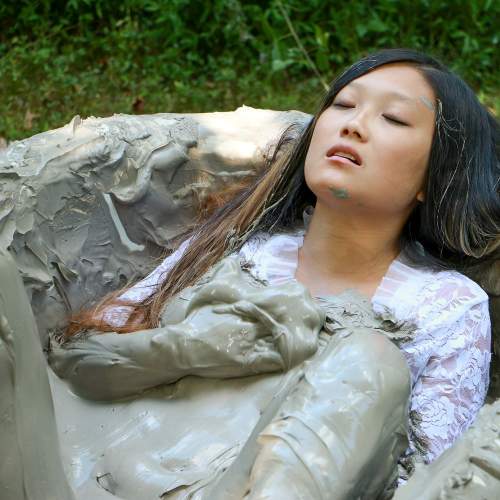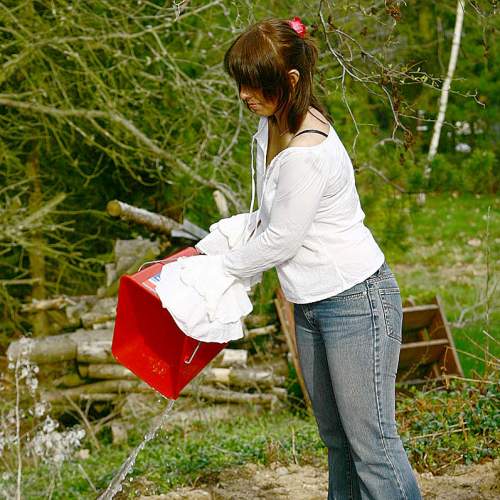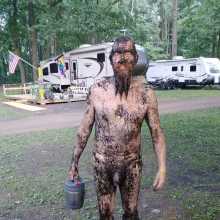|
|
|||
| forums: groups: | |||
|
"has anybody ever used joint compound?"
Long ago as a teen, i apprenticed under my father with his carpentry trade and i learned how to use joint compound. It was an amazing feel smell and slurp/smack sound. I kind of stored that knowledge in the back of my head until now. I've seen many forms of wam here and on other sites but never anything about joint compound aka mud. It's the whitish paste used to cover the drill holes that keeps the sheetrock in place. Has anybody ever used it? Does anybody have footage of it?
I have used joint compound many times, I've added tempera paints for color as well. I buy the ready to go 4.5 gallon buckets; use as is for super thick or mix in some water to thin it out. Leaving the bucket in a tub of hot water for an hour or two helps take off some of the cold (and pre-warm the tub). Scoop out as much as you can back to the bucket when done, then use lots of water to dissolve what remains. Make sure you lotion after, as it really dries your skin out (contains lime which is mildly basic). Thick layers don't dry up much but thinned out it dries faster due to the thin layer, especially around the nose/mouth and adds something to the experience (pulls the skin tight as it dries but gets slightly itchy when it starts to crack).
The others I have no experience with, but have done glue+borax slime several times and liquid latex (PIA if you have body hair). I would love to try alginate some time.
The others I have no experience with, but have done glue+borax slime several times and liquid latex (PIA if you have body hair). I would love to try alginate some time.
Holy shit, I think this is the first time I've seen something industrial-related that isn't poisonous!
http://www.gpda.com/healthAndSafety
http://www.gpda.com/healthAndSafety
nick_mi said: I have used joint compound many times, I've added tempera paints for color as well. I buy the ready to go 4.5 gallon buckets; use as is for super thick or mix in some water to thin it out. Leaving the bucket in a tub of hot water for an hour or two helps take off some of the cold (and pre-warm the tub). Scoop out as much as you can back to the bucket when done, then use lots of water to dissolve what remains. Make sure you lotion after, as it really dries your skin out (contains lime which is mildly basic). Thick layers don't dry up much but thinned out it dries faster due to the thin layer, especially around the nose/mouth and adds something to the experience (pulls the skin tight as it dries but gets slightly itchy when it starts to crack).
The others I have no experience with, but have done glue+borax slime several times and liquid latex (PIA if you have body hair). I would love to try alginate some time.
The others I have no experience with, but have done glue+borax slime several times and liquid latex (PIA if you have body hair). I would love to try alginate some time.
When you used it how long did it take to get dry?
thickmudluvr said:
When you used it how long did it take to get dry?
When you used it how long did it take to get dry?
A thin layer maybe 10-20 minutes, as I said faster on the face where your skin is warmer and there is more air movement from your breathing. A thick layer will skin over in 20-30 but I've never had that really dry or harden, so it must be over 2 hours. Maybe with the help of a blow dryer or some fans it could be done faster?
Does it hurt when you put it on you or while it's drying? Can it be recycled? (Dried flakes mixed with water for reuse)
I tend not to let it dry up, no idea if it's reusable once dry (it would probably need to be crushed or even ground to do so). The powder is not great to inhale, hence my buying the premixed stuff. No, nothing about it hurts (not sure where the fun would be in something that does), as I said just a bit of an itch as it pulls the skin.
When i was younger cold cream and peanut butter were the only forms of wam i used. I was about 5 or 6 the first time i wammed in mud and 14 the first time it became arousing post puberty
11/17/25, 2:05pm: No-bump reply
I'd personally avoid joint compound as it's horribly drying to one's skin. While it does wash off easily with soap and warm water, it strips the moisture from my hands every time I tape. I can't imagine the level of scaliness that would be incurred after a full on joint compound session.
It won't kill you, but it likely won't be the most pleasant feeling afterward either. If you're absolutely committed to trying it, spot test with small amounts of unexposed skin first.
It won't kill you, but it likely won't be the most pleasant feeling afterward either. If you're absolutely committed to trying it, spot test with small amounts of unexposed skin first.
Wildebeest said: I'd personally avoid joint compound as it's horribly drying to one's skin. While it does wash off easily with soap and warm water, it strips the moisture from my hands every time I tape. I can't imagine the level of scaliness that would be incurred after a full on joint compound session.
It won't kill you, but it likely won't be the most pleasant feeling afterward either. If you're absolutely committed to trying it, spot test with small amounts of unexposed skin first.
It won't kill you, but it likely won't be the most pleasant feeling afterward either. If you're absolutely committed to trying it, spot test with small amounts of unexposed skin first.
Ok, thanks for the heads up!
11/17/25, 2:05pm: No-bump reply
Sponsors
To avoid content being blocked due to your local laws, please verify your age ?
Sponsors
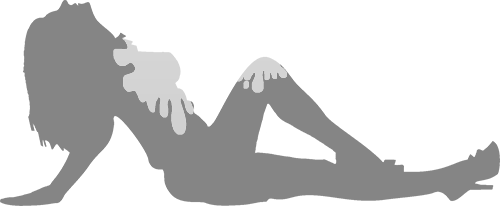
Design & Code ©1998-2025 Loverbuns, LLC 18 U.S.C. 2257 Record-Keeping Requirements Compliance Statement
Epoch Billing Support Log In





 Love you, too
Love you, too















